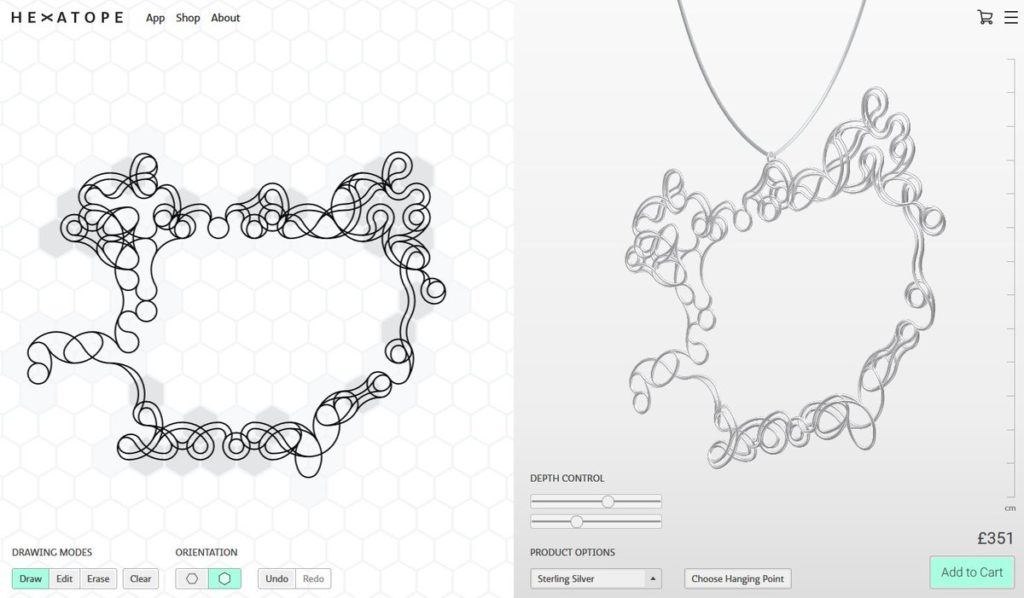Charlotte Dann is a designer/developer based in London, working across a wide spectrum of disciplines ranging from electronics to fine glasswork; she has not yet found a craft she does not wish to master.
While undertaking an MA in Computational Arts she created Hexatope, a combination of her two central vocations of jewellery design and web development. Hexatope allows anyone to design their own jewellery by intuitively interacting with a hexagonal grid entirely in the browser. Designs are then produced in precious metal using 3D-printing technology and traditional metalwork.
Charlotte’s talked about the integration of artistry to the web and how practical design techniques can evolve with computational thinking.
Because …
We had stumbled across Hexatope when it was a kickstarter project and immediately fell in love with it. It is one of those projects which ticked all the right boxes, from a 3D rendered shape via webGL in the browser which was fully customisable, to then taking that digital object, converting it into something 3D printed, then cast into a final product. Digital to Analog with a touch of personalisation, it was something we needed to bring to more people’s attention.

Some of the key take-aways from the 02017 Material Conference, was to look at where digital and the web can augment the experience rather than replace or supplement an analog version. Hexatope really took this idea of crafting something online with simple rules that anyone with a browser was capable to interacting with, and bringing that to life in a physical object.
Charlotte’s story is a great one as well. It is a perfect example of that blend of science and art. Without the doodling, hobbies and studies in art, mixed with the side projects and jobs in tech, her sorts of projects wouldn’t have occurred.
Putting people in a box of just Technologist or Artist become self-defeating and these brilliant ideas would rarely emerge.
Jewellery ➞ Web
We learnt that it takes A LOT of work in the physical world to “get it right”. In her talk, Charlotte makes a great observation about two of the virtues of the Web and digital, she says: “Duplication: If I want to make two rings, say the second one slightly different. I have to make the same ring twice, then add a bit too it, but if you want to make different version of the same program you only need to make it once. Then you can copy it, and change a bit of the original thing. It is an additive medium. Which means when you want to learn something new, you get to start from the farthest you’ve ever got before. Without having to repeat all the previous steps like when you’re making something. The other quality is Reliable Consistency.”
In our digital world, we take for granted that all the external factors of everyday life are removed from our world. The webpage renders the same no matter the weather, humidity, time of day, etc. These 1s and 0s instructions are executed the same every time. That’s certainly not true when dealing with the analog. Using the lost wax method, she would pour in molten silver to dissolve the wax. She has sprues to make sure the metal would reach all the corners of the design before the liquid would cool. Even in the most controlled environments, it is not the same twice. There are so many of these tiny imperfections in each step that they can add up as the process continues. We rarely have these problems in the digital world, checksums, error correction and more all help to prevent issues in communication so that what we do receive via the web and in digital is consistent.
You can view all the video recordings and subscribe to the Material podcast on the Material Archive site.